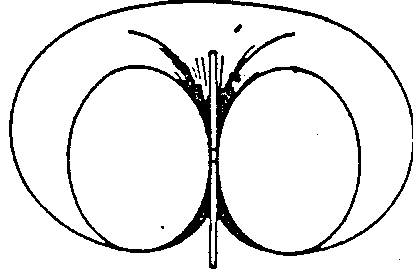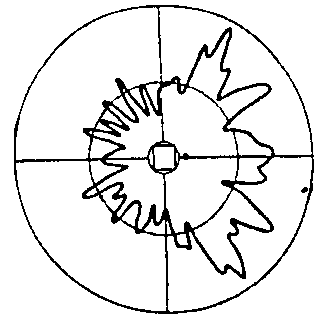
Antenna Gain
For propagation distances d much larger than the antenna size, the far field of the generated Electromagnetic wave dominates all other components.
The amount of energy radiated in a particular direction relative to the amount of energy that would be radiated by a theoretical
omni-directional antenna determines the gain in that direction.

Figure:
Theorectical gain of a dipole antenna
A vertical dipole antenna has constant gain in any horizontal direction, but
zero gain
in vertical direction.

Figure: typical gain pattern of an antenna mounted close to a metal tower
The received power at a certain distance can be found from path loss models, such as free space loss.
If multipath scattering occurs near the
antenna, the pattern divers highly from the
theoretical curve, and nulls in certain directions may occur.
Conservation of Energy
The total gain of the antenna, integrated over all possible directions
should be unity.
This can be understood from the law of conservation of energy.
The total electric power fed into the antenna equals the total radiated power, provided
that no losses occur.
Omni-directional antenna
One can make an antenna that radiates the same amount of energy in any horizontal direction.
This type of antenna is popular in broadcasting or for cellular base stations
in networks without sectorization. The above vertical dipole is an example of such an antenna.
However it is theoretically impossible to create an antenna that radiates the same power
in all directions, including vertical directions.
 Exercise
Exercise
Explain why the vertical dipole must have a gain larger than unity
in horizontal directions.









